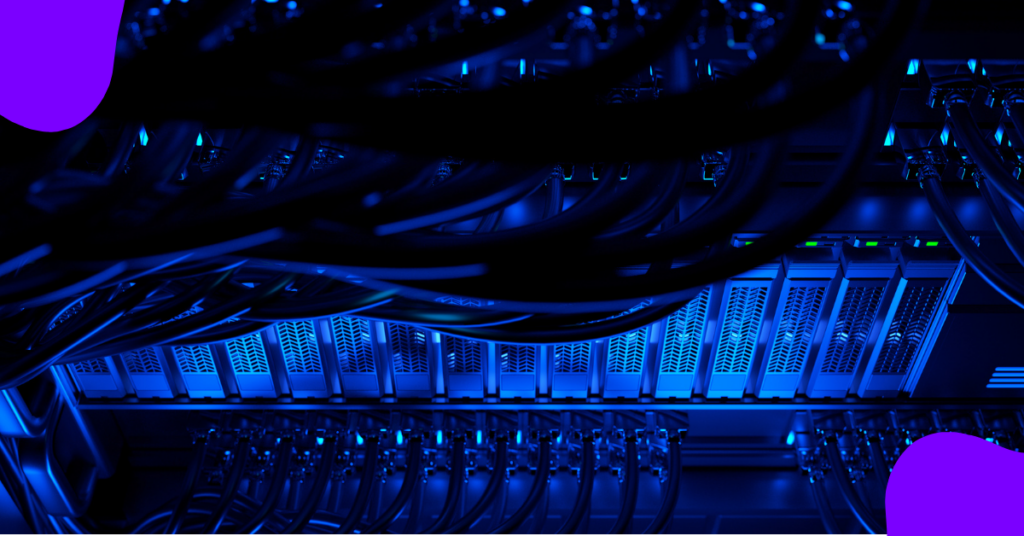You launch your game. Ten players join, and all goes well.
A month later, hundreds log in, and suddenly you see lag, drops, and angry messages.
The issue often isn’t your code; it’s your server setup. Choosing between dedicated vs shared game servers can decide how far your multiplayer title can grow.
The right choice affects multiplayer game performance, cost, and how well your game server infrastructure handles player spikes.
Let’s break down how dedicated vs shared game server setup works, what numbers matter, and when to switch as your server scalability needs increase.
You’ll also learn:
- What Are Shared Game Servers?
- What Are Dedicated Game Servers?
- Performance and Scalability Comparison
- Cost Breakdown and Efficiency
- Player Experience: Uptime, Lag, and Retention
- When to Upgrade from Shared to Dedicated
What Are Shared Game Servers?

A shared game server means your game runs on the same hardware as other titles hosted by the same game hosting provider. You share CPU cores, RAM / Memory, and bandwidth with many clients.
This setup works like renting a room in a large building. You get some space, but neighbors affect your comfort. If another game uses too much CPU, your players may feel lag or longer load times.
Shared hosting is ideal for small indie games, early prototypes, or multiplayer titles with up to 1–100 concurrent users (CCU). These servers usually have 8–16 GB RAM, limited storage, and shared bandwidth below 1 Gbps.
Because resources are split, server resource allocation can’t be fine-tuned. Still, the low price, often $5–$20 per month, makes it a good start for developers testing new features or player mechanics.
You can deploy fast, monitor usage through control panels, and scale only when traffic grows.
What Are Dedicated Game Servers?

A dedicated game server gives you full hardware control. No sharing. You own the CPU cores, RAM, and NVMe SSD storage. You decide how to configure the game engine environment, whether Unity, Unreal Engine, or Godot.
Dedicated setups allow deeper backend access. You can optimize network settings, choose your operating system, and deploy your own load balancing rules.
They are ideal for larger communities or competitive multiplayer games running 500 CCU and above. Here, performance matters:
- CPU: 8–32 cores
- RAM: 16–64 GB
- Bandwidth: 1–10 Gbps
- Latency / Ping: under 50 ms
- Uptime / SLA: 99.9–99.99 %
Dedicated servers often sit in global data centers close to players, forming low-latency data centers that help maintain stable connections across regions.
They also support Docker / Kubernetes for containerization, letting you orchestrate multiple game instances efficiently.
If your players report less than <50 ms ping and no packet loss (<1 %), they’ll stay longer and spend more time in matches, improving overall player retention.
Dedicated vs Shared Game Servers Performance and Scalability Comparison
When we compare dedicated vs shared game servers, the main gap lies in performance and flexibility.
Shared servers use fixed capacity. They’re cheaper but limited. When traffic doubles, you may hit CPU and RAM limits quickly. Scaling means moving to a bigger shared plan or migrating entirely.
Dedicated servers, by contrast, handle horizontal vs vertical scaling better. You can add more instances (horizontal) or upgrade existing specs (vertical).
Many studios build auto-scaling infrastructure using auto-scaling groups and load balancers. These systems monitor metrics like CPU usage > 80 % and automatically provision extra servers, usually in under 30 seconds.
Elastic setups ensure real-time latency reduction even when thousands join at once. A solid load balancing for multiplayer games can distribute players across regions or sessions, reducing overload and improving fairness.
The result? Multiplayer hosting performance stays stable even during global tournaments.
Dedicated vs Shared Game Servers Cost Breakdown and Efficiency
Pricing differs widely for dedicated vs shared game servers. Shared servers often have a flat monthly rate of $5 to $100, depending on RAM and bandwidth. They suit small budgets and light loads.
Dedicated servers cost more but give consistent output. On average, you’ll spend $0.02–$0.10 per active player, depending on bandwidth and tick rate requirements.
Cloud-based options using the pay-as-you-go model bring more flexibility. You only pay for what you use, avoiding idle costs.
However, cost-effective game hosting isn’t only about cheaper bills. Efficiency means optimizing hardware use and reducing performance bottlenecks. For instance, running a higher tick rate (60–120 Hz) on dedicated nodes can deliver smoother updates and fewer sync errors without buying extra machines.
For long-term stability, cloud hosting with auto-scaling keeps bills predictable while ensuring uptime above 99.9 %. That balance is key for sustainable growth.
Dedicated vs Shared Game Servers Player Experience: Uptime, Lag, and Retention
Every game developer knows that performance defines the player’s journey. If matches stutter or drop, players leave.
In shared setups, packet loss can rise above 1 % during traffic spikes, increasing lag. Shared bandwidth and a lower server tick rate cause uneven gameplay.
Dedicated servers fix this by isolating traffic. Uptime / SLA improves to 99.9 %, with steady ping < 50 ms even during peak hours. Global multiplayer studies say differences can lift retention by up to 20 %.
Stable infrastructure also helps matchmaking. Smooth real-time multiplayer performance means players connect faster and finish more matches, which is a strong signal for both engagement and ranking systems.
To enhance stability, studios often deploy a Content Delivery Network (CDN) and edge computing nodes to cache static data closer to players. These edge setups shorten route distance and help achieve under 50 ms average latency globally.
The outcome: happier players, longer sessions, and fewer rage-quits.
When to Upgrade from Shared to Dedicated Servers
When should a team move up from shared servers to dedicated servers?
Here are clear triggers that show you’re ready to migrate:
- Concurrent users (CCU) exceed 1,000.
- Uptime / SLA drops below 99.9 %.
- Latency / Ping rises above 50 ms.
- You’re facing global demand or regional lobbies.
If you’re hitting those numbers, shared resources can’t keep up.
As a game developer, you can automate your upgrades using cloud platforms such as AWS GameLift, Google Cloud Game Servers, or Azure PlayFab. Others choose independent hosts like CloudPap Compute, which specializes in flexible scaling and quick instance deployment.
The migration path often includes containerizing your servers with Docker / Kubernetes, then deploying to distributed data centers. This approach supports elastic server deployment while maintaining short scaling time (<30 seconds).
Proper monitoring through tools like Datadog, Prometheus, or Grafana ensures you can benchmark performance before and after migration.
Dedicated vs Shared Game Servers: Key Metrics Summary
| Metric | Shared Server | Dedicated Server |
| CPU cores | Shares (4-8 cores) | Private (8-32 cores) |
| RAM/Memory | 8-16 GB | 16-64 GB |
| Bandwidth | Up to 1 Gbps (shared) | 1-10 Gbps (dedicated) |
| Latency/ping | 60-100 ms | <50 ms |
| Uptime/SLA | 97-99% | 99.9-99.99% |
| Tick rate | 30-60 Hz | 60-120 Hz |
| Scaling time | Manual (hours) | <30 seconds (auto) |
| Cost per player | $0.01-$0.03 | $0.02-$0.10 |
| Best for | Indie/Prototypes (<100 CCU) | Live/Competitive Games (500-10,000 CCU) |
This shows why teams aiming for sustainable multiplayer game performance lean toward dedicated models as their communities grow.
How, As Game Developers, You Optimize Either Option
Some best practices keep servers stable and costs low regardless of your setup.
- Monitor all metrics — latency, uptime, and CPU load.
- Automate deployment through CI/CD pipelines.
- Containerize game instances using Docker or Kubernetes.
- Benchmark with load-testing tools like k6 or JMeter.
- Scale based on live data, not guesses.
These steps ensure your server scalability strategy evolves smoothly. You can start small with shared nodes and then provision dedicated ones as traffic expands.
The Role of Cloud Hosting and Data Centers
Modern cloud-based game servers changed how developers think about infrastructure. You no longer need to buy physical machines.
Instead, cloud hosting platforms let you deploy, monitor, and scale worldwide.
Distributed data centers reduce latency by locating servers close to player clusters. Load balancing for multiplayer games ensures players connect to the nearest region, minimizing lag.
These cloud setups support elastic infrastructure, where auto-scaling groups provision or shut down servers as demand shifts. It’s an efficient way to handle global player surges without wasting resources during quiet hours.
This approach balances player experience optimization and cost control, which is essential for small studios building sustainable ecosystems.
Final Thoughts
Choosing between dedicated vs shared game servers isn’t only a tech call… It’s a growth decision.
If you’re testing your game or still under 100 CCU, a shared plan keeps costs low and management simple. But once your audience grows, dedicated game servers unlock control, reliability, and real-time scaling that shared setups can’t match.
Think of it as moving from a rented desk to your own office. You gain freedom, stability, and room to grow.
When your player base explodes overnight, you need servers that grow with you. CloudPap Compute offers flexible dedicated servers built for modern game developers, scalable, monitored, and optimized for multiplayer growth.
Dedicated vs Shared Game Servers FAQs
1. What is the difference between dedicated vs shared game servers?
The difference between dedicated and shared game servers is that a dedicated game server runs on full hardware that only hosts one game or a studio’s project. It offers more CPU cores, RAM, and bandwidth, improving performance and uptime. A shared game server splits resources between multiple titles or users. It’s more affordable but can cause latency, packet loss, or limited scalability as concurrent users (CCU) grow.
2. Which is better for multiplayer games: dedicated and shared game servers?
Shared servers are fine for small games or prototypes under 100 CCU. However, a dedicated server is better if your game needs real-time latency reduction, high tick rates (60–120 Hz), and uptime above 99.9%. It allows full resource allocation and control for smooth multiplayer game performance.
3. When should I upgrade from shared to dedicated game servers?
You should upgrade from shared to dedicated game servers when your player base exceeds 1,000 concurrent users, latency surpasses 50 ms, or uptime drops below 99.9%. Dedicated setups support auto-scaling infrastructure, load balancing, and elastic deployment, which are key for growth.
4. How much does a dedicated game server cost compared to shared hosting?
A dedicated server costs $50–$300/month, depending on CPU, RAM, and bandwidth. Shared servers start around $5–$20/month, but share system resources. Dedicated servers range from $0.02–$0.10/player when measured by cost per player, making them more efficient for high CCU games.
5. Do dedicated servers improve player experience?
Yes, dedicated servers improve player experience.. Games hosted on dedicated servers have 20% better retention on average. They reduce lag, packet loss (<1%), and improve ping (<50 ms) through optimized data centers and Content Delivery Networks (CDNs). This stability helps you, as a game developer, keep players engaged longer.
6. What are the best practices for scaling dedicated game servers?
The best practices for scaling dedicated game servers are horizontal scaling for distributed multiplayer worlds and vertical scaling for single-instance performance boosts.
Take advantage of Docker, Kubernetes, and auto-scaling groups to automatically deploy, monitor, and orchestrate servers. This ensures high server scalability and efficient resource use.
7. Can I use cloud hosting for dedicated game servers?
Yes, you can use cloud hosting for dedicated game servers. Cloud hosting lets you provision, configure, and scale dedicated servers on demand. It offers flexible billing, 99.99% uptime SLAs, and low-latency data centers, perfect for growing indie studios or small gaming startups looking to manage costs while maintaining high multiplayer performance.

